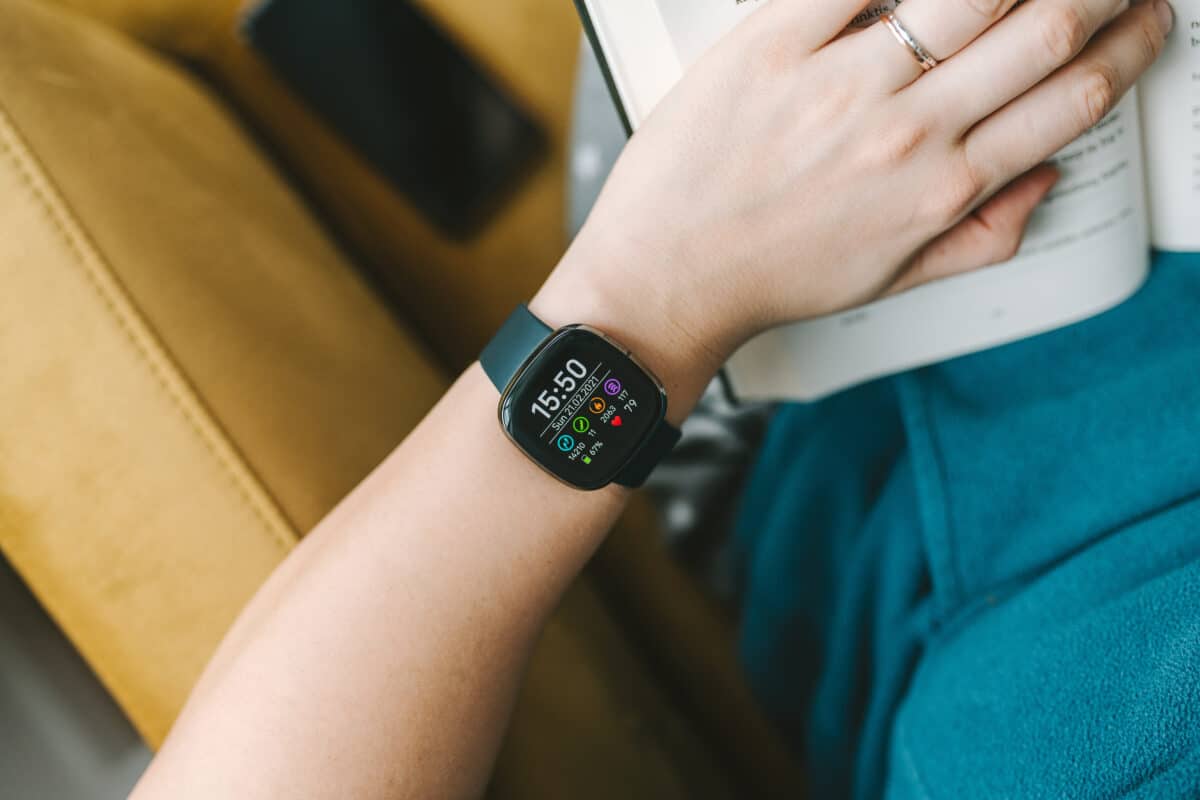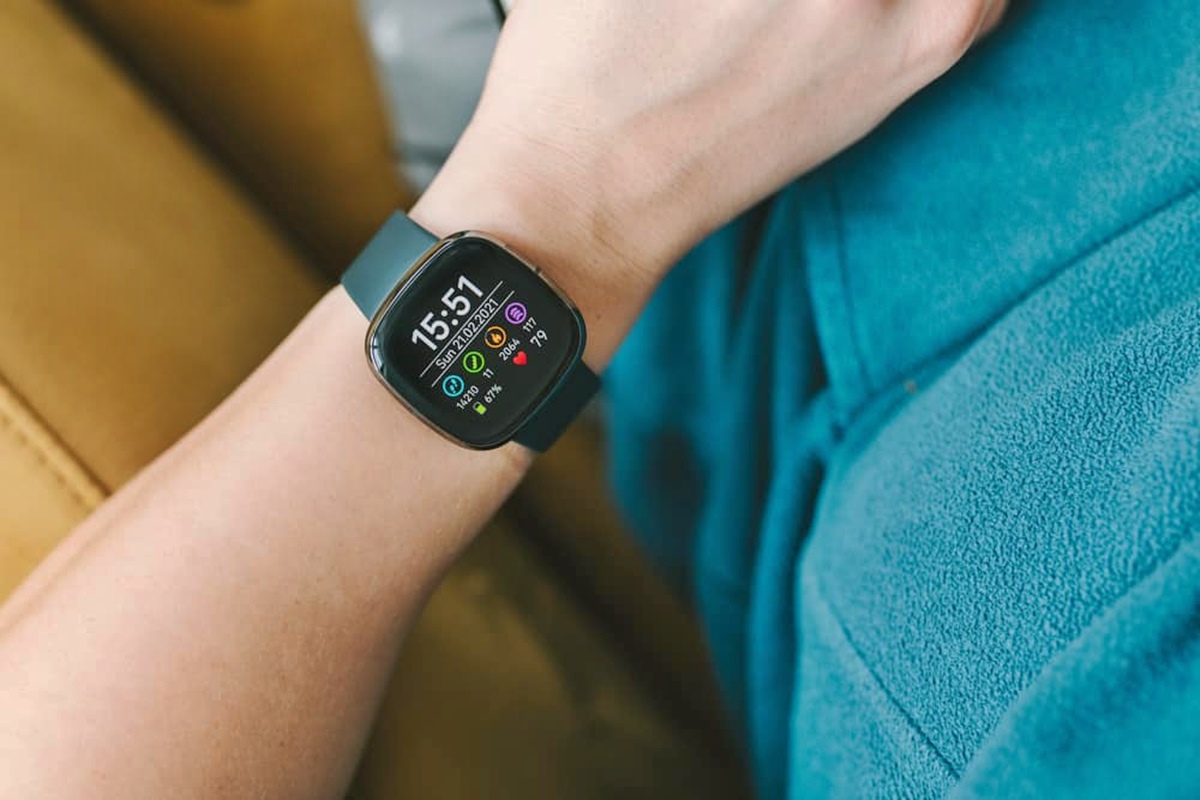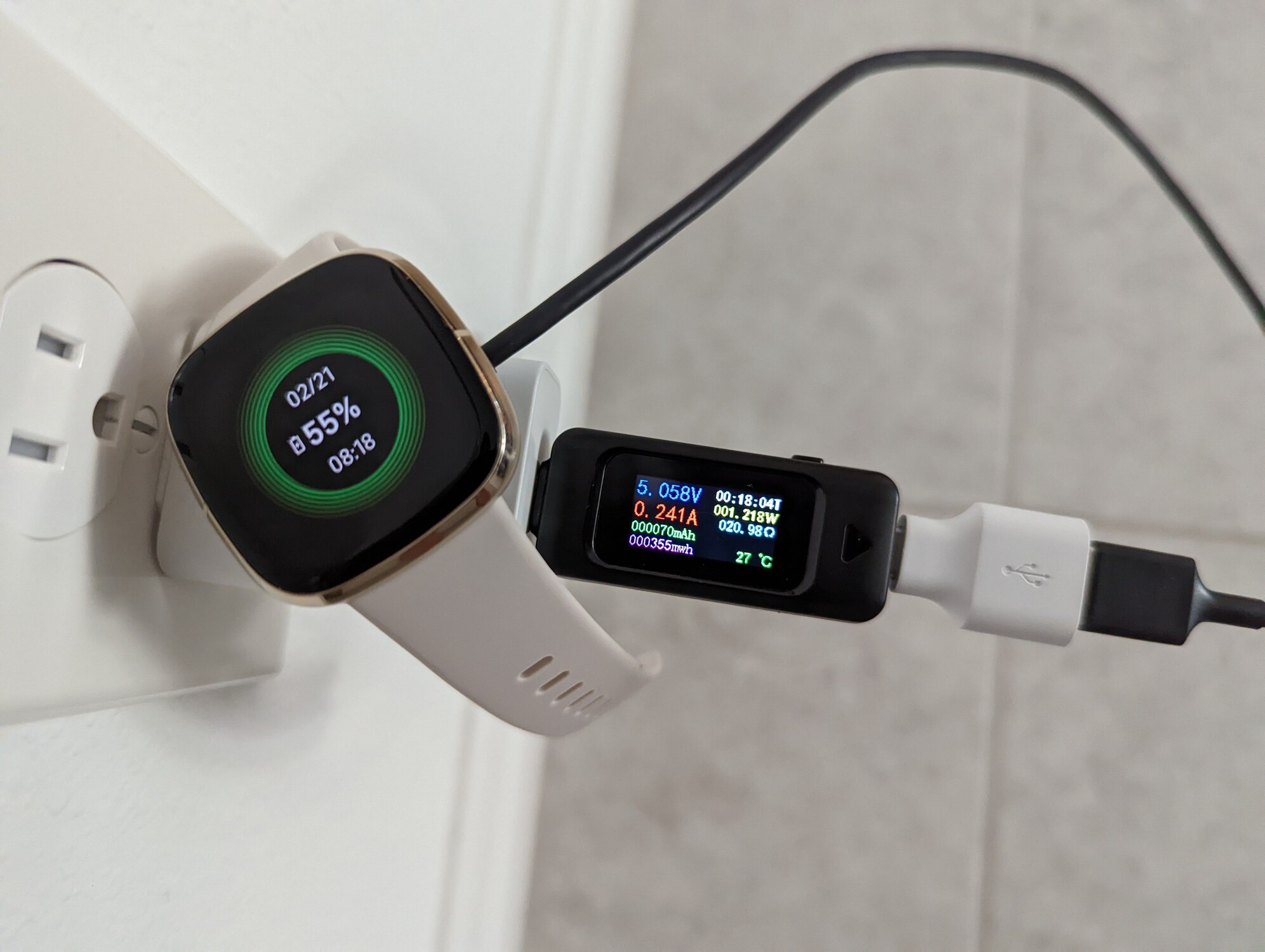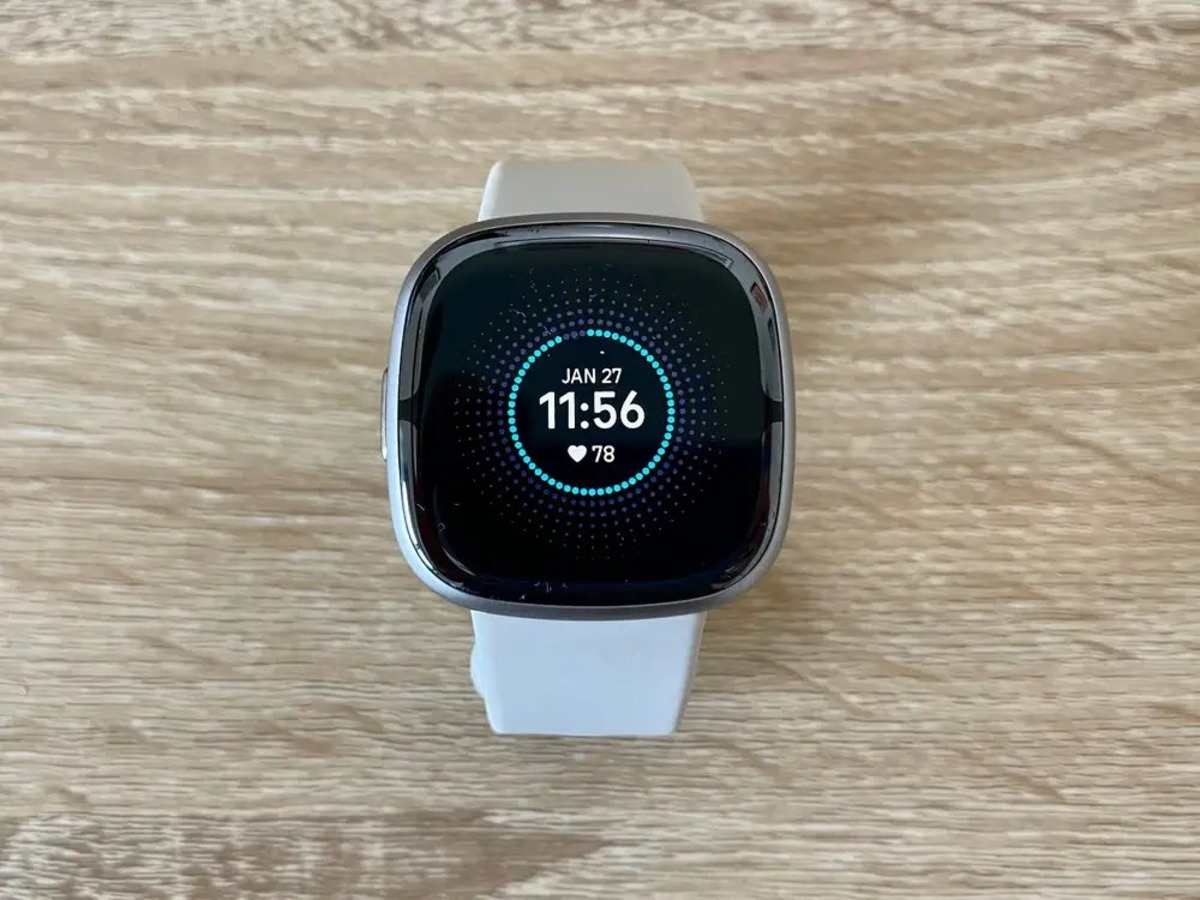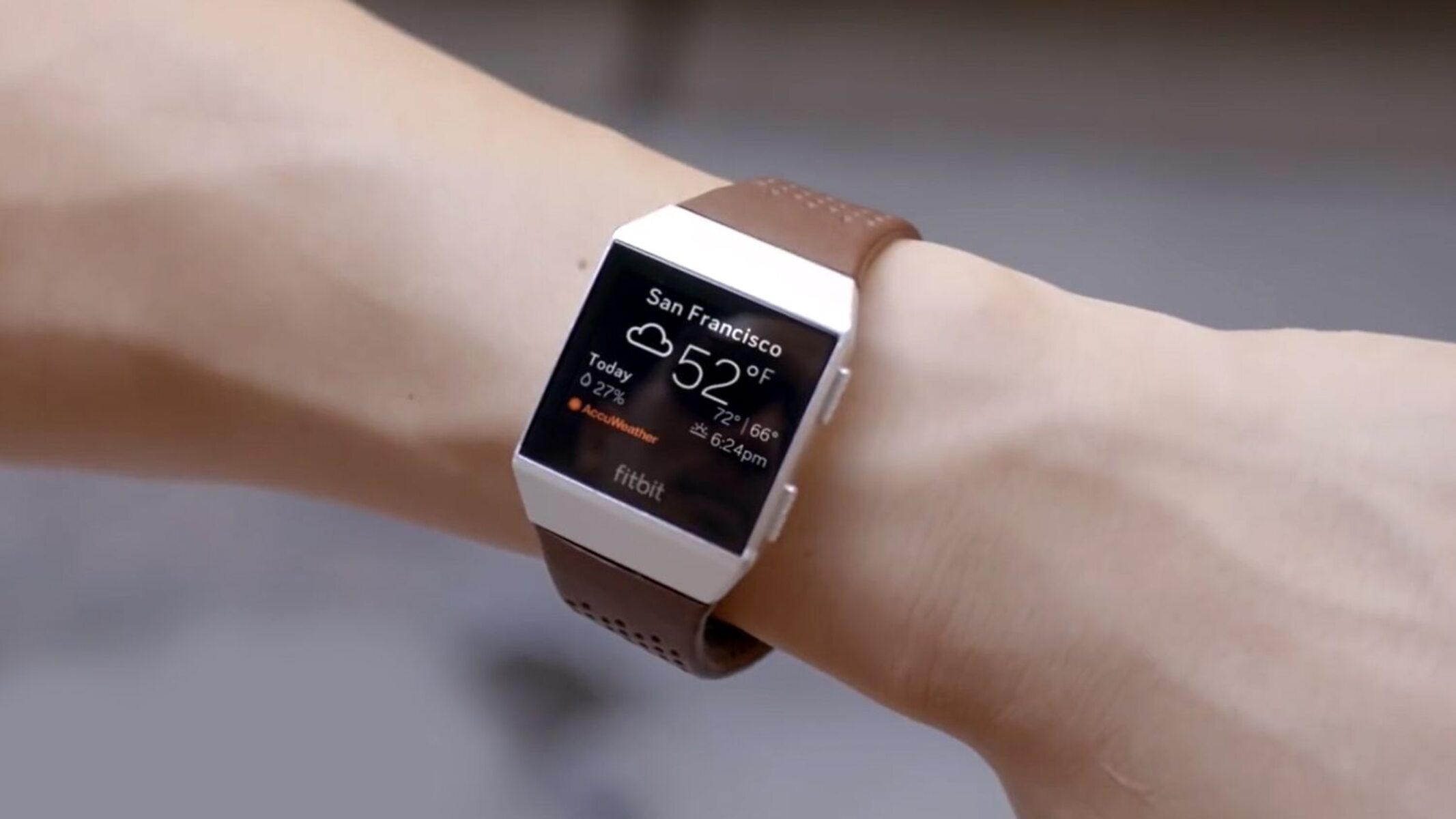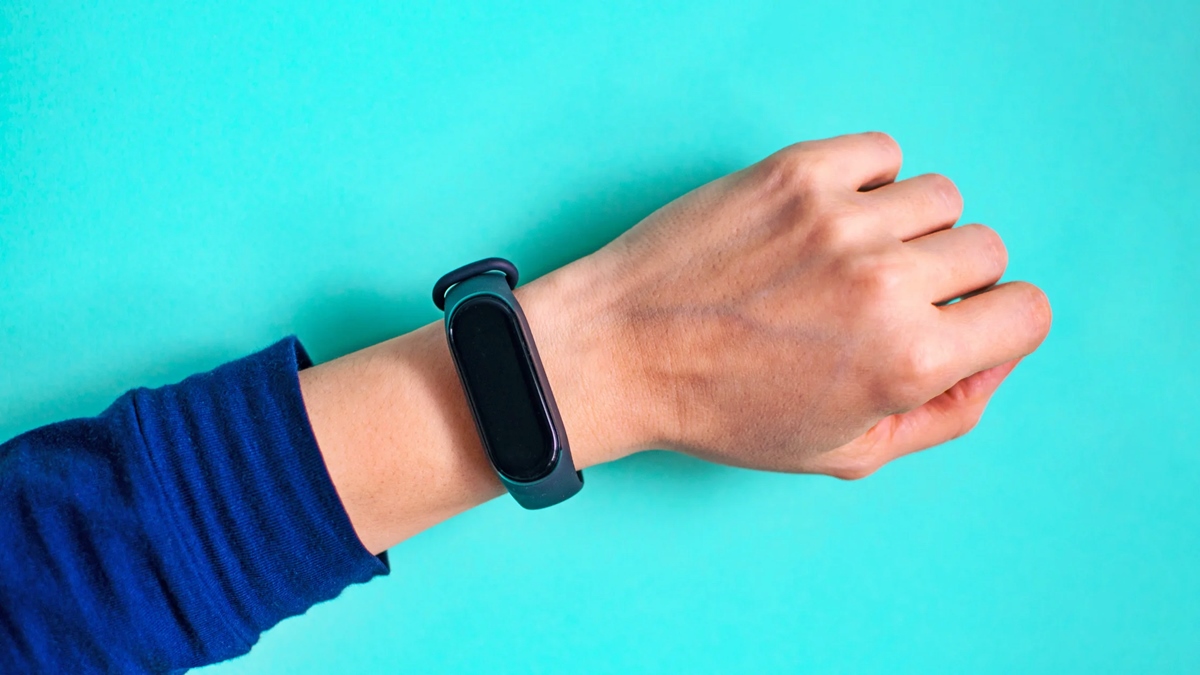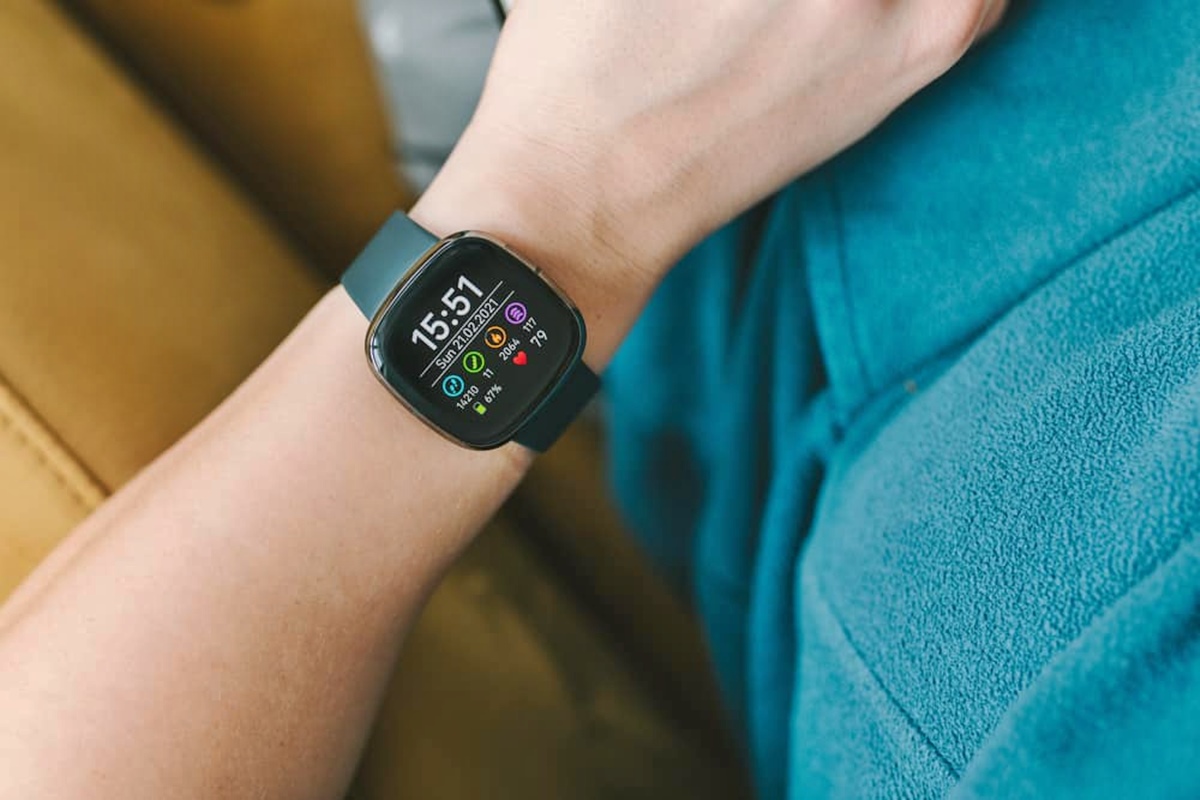Adjust Screen Brightness
The screen brightness of your Fitbit Sense plays a significant role in determining the overall battery life. By adjusting the screen brightness to an optimal level, you can effectively prolong the battery duration of your device.
When the screen brightness is set too high, it consumes more power, leading to a quicker drain on the battery. On the other hand, setting the brightness too low might compromise the readability of the display, especially in bright outdoor settings. Therefore, finding the right balance is crucial.
To adjust the screen brightness on your Fitbit Sense, start by swiping right on the clock screen to access the Settings app. From there, tap on "Settings" and then "Brightness". Here, you can choose from different brightness levels or enable the "Auto" option, which allows the device to automatically adjust the brightness based on ambient light conditions.
By setting the brightness to a level that is comfortable for both indoor and outdoor use, you can significantly extend the battery life of your Fitbit Sense. This simple adjustment not only conserves power but also enhances the overall user experience by ensuring optimal visibility in various lighting environments.
Making this small change can yield substantial benefits, allowing you to enjoy the full functionality of your Fitbit Sense without constantly worrying about battery life. With the screen brightness optimized, you can confidently make the most of your Fitbit Sense throughout the day, knowing that its battery is efficiently utilized.
By implementing this adjustment, you can strike a harmonious balance between battery preservation and usability, ensuring that your Fitbit Sense remains a reliable companion for your daily activities.
Disable Always-On Display
The Always-On Display feature on the Fitbit Sense is undoubtedly convenient, providing continuous visibility of the time and your fitness stats without the need to raise your wrist or tap the screen. While this feature offers undeniable utility, it also has a notable impact on the device's battery life. By disabling the Always-On Display, you can effectively extend the usage duration of your Fitbit Sense between charges.
To disable the Always-On Display, navigate to the Settings app by swiping right on the clock screen. From there, tap on "Settings" and then select "Always-On Display". Here, you can toggle the feature off, allowing the screen to activate only when you raise your wrist or tap it.
By deactivating the Always-On Display, you are essentially minimizing the screen's active duration, which significantly reduces power consumption. This adjustment proves especially beneficial during periods of inactivity, such as when sleeping or engaging in sedentary activities. With the Always-On Display disabled, the Fitbit Sense conserves energy by activating the screen only when necessary, thereby optimizing battery usage.
Moreover, the decision to disable the Always-On Display does not compromise the functionality of the Fitbit Sense. The device remains fully capable of providing instant access to your fitness metrics and notifications as soon as you interact with it. This approach ensures that the device's battery is utilized judiciously, allowing you to enjoy prolonged usage without sacrificing essential features.
By implementing this adjustment, you can effectively tailor the Fitbit Sense to align with your specific usage patterns, optimizing its battery performance to suit your lifestyle. Whether you are an avid fitness enthusiast or a busy professional, disabling the Always-On Display empowers you to make the most of your Fitbit Sense without being constrained by frequent recharging requirements.
In essence, the decision to disable the Always-On Display empowers users to take control of their Fitbit Sense's battery life, ensuring that it remains a reliable companion throughout the day. This simple yet impactful adjustment exemplifies the adaptability of the Fitbit Sense, allowing users to personalize their device to suit their individual preferences and usage habits.
Limit Notifications
Managing the notifications on your Fitbit Sense is a pivotal strategy for optimizing its battery life. While notifications serve as valuable updates and alerts, excessive or unnecessary notifications can lead to frequent screen activations and background processes, ultimately draining the device's battery more rapidly.
To limit notifications, begin by assessing the apps that send alerts to your Fitbit Sense. It's essential to discern which notifications are truly indispensable and which can be minimized or disabled. By prioritizing essential notifications, such as messages from important contacts or critical app updates, you can streamline the flow of alerts to your device, thereby reducing unnecessary battery consumption.
Navigate to the Fitbit app on your smartphone to access the Notification settings. From there, you can selectively enable or disable notifications from specific apps, tailoring the alerts to align with your preferences and requirements. By curating the notification selection, you effectively minimize the frequency of screen activations and background processes, conserving the Fitbit Sense's battery power for crucial interactions and activities.
Furthermore, consider the notification delivery method. Opting for vibration alerts over screen activations can contribute to battery conservation, as it minimizes the display's active duration while still ensuring that you remain informed of important notifications. By leveraging vibration alerts, you strike a balance between staying connected and preserving the Fitbit Sense's battery life.
In addition, periodic review and adjustment of notification settings are essential to adapt to evolving usage patterns and preferences. As your communication and app usage habits evolve, periodically revisiting the notification settings enables you to maintain an optimal balance between staying informed and conserving battery power.
By limiting notifications on your Fitbit Sense, you effectively tailor the device to accommodate your specific needs, ensuring that essential alerts take precedence while non-essential notifications are minimized. This strategic approach not only optimizes battery performance but also enhances the overall user experience by reducing unnecessary interruptions and distractions.
In essence, the deliberate curation of notifications empowers you to harness the full potential of your Fitbit Sense while preserving its battery life for prolonged usage. This proactive strategy reflects the adaptability and customization capabilities of the Fitbit Sense, allowing users to personalize their device to suit their individual preferences and optimize its performance according to their distinct lifestyle and communication requirements.
Use a Simple Watch Face
The choice of watch face on your Fitbit Sense not only contributes to its aesthetic appeal but also significantly impacts its battery life. Opting for a simple watch face, characterized by minimal animations and static elements, can effectively prolong the usage duration of your device between charges.
A simple watch face typically features essential timekeeping elements, such as hour and minute hands, along with basic complications for displaying additional information like date, battery level, and fitness metrics. By prioritizing functionality over elaborate visuals, these watch faces minimize the power consumption associated with dynamic graphics and animations.
When compared to intricate watch faces that incorporate continuous animations, complex backgrounds, or dynamic elements, simple watch faces place less strain on the Fitbit Sense's battery. The reduction in active screen elements and animations translates to lower power consumption, thereby extending the device's battery life.
To select a simple watch face for your Fitbit Sense, access the Clocks section within the Fitbit app on your smartphone. Here, you can browse through a diverse range of watch face options, each offering a distinct balance of style and functionality. Look for watch faces that prioritize clarity and essential information while minimizing visually demanding elements.
By opting for a simple watch face, you not only conserve battery power but also ensure clear visibility of crucial information at a glance. The uncluttered design of these watch faces facilitates effortless readability, allowing you to access the time, date, and fitness data with minimal visual distractions.
Furthermore, the simplicity of these watch faces aligns with a minimalist aesthetic, promoting a clean and unobtrusive display that seamlessly integrates into various settings and activities. Whether you are engaged in a workout, attending a meeting, or simply navigating your daily routine, the unassuming elegance of a simple watch face complements diverse environments and occasions.
In essence, the decision to use a simple watch face on your Fitbit Sense reflects a deliberate choice to optimize its functionality and battery performance. By prioritizing clarity, functionality, and power efficiency, these watch faces empower you to make the most of your device's capabilities while ensuring prolonged usage between charges.
Turn off GPS
Turning off the GPS functionality on your Fitbit Sense can significantly contribute to extending its battery life. While GPS tracking offers valuable insights into your outdoor activities and exercise sessions, its continuous operation consumes a notable amount of power. By selectively disabling GPS when it is unnecessary, you can effectively conserve the Fitbit Sense's battery power for essential functions.
The GPS feature on the Fitbit Sense enables precise tracking of your location, distance covered, and route taken during outdoor workouts, walks, or runs. This functionality is instrumental in providing comprehensive fitness data and mapping your exercise routes with accuracy. However, when GPS remains active throughout the day, even during periods of inactivity or indoor activities, it exerts a considerable drain on the device's battery.
To turn off GPS on your Fitbit Sense, access the Exercise app and select an activity that typically utilizes GPS tracking, such as running or outdoor cycling. While initiating the activity, navigate to the settings or options menu within the exercise mode and disable the GPS feature. This action ensures that the Fitbit Sense refrains from continuously accessing GPS signals, conserving battery power for other essential functions.
By selectively turning off GPS when engaging in indoor workouts, strength training, or activities close to home, you effectively optimize the Fitbit Sense's battery performance. This strategic approach allows you to preserve the device's power for crucial tasks while still leveraging GPS tracking during outdoor exercises when its benefits are most impactful.
Furthermore, the ability to toggle GPS on and off based on specific activity requirements exemplifies the adaptability and customization capabilities of the Fitbit Sense. This feature empowers users to tailor the device to suit their distinct workout routines and preferences, ensuring that battery power is allocated judiciously to align with their exercise needs.
In essence, the decision to turn off GPS on the Fitbit Sense reflects a proactive strategy to optimize battery performance without compromising the device's core functionalities. By leveraging GPS selectively, users can enjoy extended usage duration between charges while still benefiting from precise location tracking and comprehensive fitness insights during outdoor activities.
Update Fitbit Sense Software
Keeping the software of your Fitbit Sense up to date is pivotal in ensuring optimal performance, enhanced features, and efficient battery utilization. Regular software updates not only introduce new functionalities and improvements but also address potential issues and enhance the overall stability of the device.
When Fitbit releases software updates for the Sense, they often include optimizations aimed at enhancing battery life. These optimizations may involve refining power management algorithms, minimizing background processes, and fine-tuning system-level operations to maximize energy efficiency. By promptly installing these updates, you can leverage the latest enhancements designed to prolong the battery life of your Fitbit Sense.
To update the software on your Fitbit Sense, begin by ensuring that the device is adequately charged. Connect the Sense to its charger and ensure that it is sufficiently powered to initiate the update process. Next, open the Fitbit app on your smartphone and navigate to the device settings for your Fitbit Sense. Within the settings menu, look for the option to check for software updates. Upon selecting this option, the app will initiate a scan to determine if any updates are available for your Fitbit Sense.
If an update is detected, follow the on-screen prompts to download and install the latest software version. It is essential to ensure that your Fitbit Sense remains connected to its charger throughout the update process to prevent any interruptions. Once the update is successfully installed, your Fitbit Sense will be equipped with the latest enhancements, including potential optimizations aimed at extending its battery life.
By staying proactive in updating the software of your Fitbit Sense, you not only benefit from the latest features and improvements but also ensure that the device operates with maximum efficiency, including battery utilization. This strategic approach aligns with Fitbit's commitment to continuously enhancing the user experience and device performance, placing a strong emphasis on optimizing battery life through software refinements.
In essence, the decision to regularly update the software of your Fitbit Sense is an essential practice that aligns with the brand's dedication to providing users with a reliable, feature-rich, and energy-efficient wearable experience. By prioritizing software updates, users can seamlessly integrate the latest optimizations into their Fitbit Sense, allowing them to enjoy prolonged battery life and an enhanced range of capabilities.
Keep Fitbit Sense Up to Date
Ensuring that your Fitbit Sense remains up to date with the latest software releases is a fundamental practice that not only enhances the device's functionality but also plays a crucial role in optimizing its battery performance. Fitbit regularly introduces software updates that encompass a spectrum of improvements, ranging from feature enhancements to refined power management mechanisms. By proactively keeping your Fitbit Sense up to date, you can harness the full potential of the device while benefiting from optimized energy efficiency.
When Fitbit releases software updates for the Sense, they often include optimizations aimed at enhancing battery life. These refinements may encompass fine-tuning power management algorithms, streamlining background processes, and optimizing system-level operations to maximize energy efficiency. By promptly installing these updates, users can leverage the latest enhancements designed to prolong the battery life of their Fitbit Sense.
To initiate the software update process, it is essential to ensure that your Fitbit Sense is adequately charged. Connecting the device to its charger and confirming sufficient power levels is a critical initial step. Subsequently, accessing the Fitbit app on your smartphone and navigating to the device settings for your Fitbit Sense allows you to check for available software updates. Upon initiating the update check, the app conducts a scan to determine if any updates are available for the device.
If an update is detected, following the on-screen prompts to download and install the latest software version is imperative. Throughout this process, maintaining a consistent connection between the Fitbit Sense and its charger is essential to prevent any interruptions. Once the update is successfully installed, the Fitbit Sense will be equipped with the latest enhancements, including potential optimizations aimed at extending its battery life.
By staying proactive in updating the software of your Fitbit Sense, you not only benefit from the latest features and improvements but also ensure that the device operates with maximum efficiency, including battery utilization. This strategic approach aligns with Fitbit's commitment to continuously enhancing the user experience and device performance, placing a strong emphasis on optimizing battery life through software refinements.
In essence, the decision to regularly update the software of your Fitbit Sense is an essential practice that aligns with the brand's dedication to providing users with a reliable, feature-rich, and energy-efficient wearable experience. By prioritizing software updates, users can seamlessly integrate the latest optimizations into their Fitbit Sense, allowing them to enjoy prolonged battery life and an enhanced range of capabilities.
Use Power Saving Mode
Activating the Power Saving Mode on your Fitbit Sense can serve as a strategic approach to extending its battery life, especially during periods when prolonged usage is essential. This mode introduces a set of optimizations that aim to conserve power without compromising the core functionalities of the device.
When the Power Saving Mode is enabled, the Fitbit Sense undergoes a series of adjustments to minimize energy consumption. These adjustments typically involve optimizing background processes, reducing screen brightness, and limiting non-essential functions, thereby ensuring that the device operates with maximum efficiency while preserving its battery life.
To activate the Power Saving Mode, navigate to the Settings app on your Fitbit Sense and locate the Power Saving Mode option. Upon enabling this mode, the device promptly initiates the implementation of energy-saving measures, resulting in a noticeable reduction in power consumption without sacrificing essential features.
While in Power Saving Mode, the Fitbit Sense strategically manages its resources, ensuring that energy is allocated judiciously to support crucial functions such as activity tracking, heart rate monitoring, and notifications. Non-essential operations are temporarily scaled back or optimized to operate with minimal power, allowing the device to sustain prolonged usage without the need for frequent recharging.
Moreover, the Power Saving Mode is particularly advantageous during scenarios where prolonged battery life takes precedence over advanced functionalities. For instance, during extended outdoor activities or when facing limited access to charging facilities, activating this mode can significantly extend the usage duration of the Fitbit Sense, providing peace of mind and uninterrupted functionality throughout the day.
By leveraging the Power Saving Mode, users can confidently tailor the energy utilization of their Fitbit Sense to align with their specific requirements, ensuring that the device remains a reliable companion during extended usage periods. This strategic approach exemplifies the adaptability and versatility of the Fitbit Sense, empowering users to optimize its battery performance to suit their distinct lifestyle and usage patterns.
In essence, the decision to utilize the Power Saving Mode underscores the user-centric design philosophy of the Fitbit Sense, allowing users to proactively manage the device's energy consumption without compromising its essential capabilities. By activating this mode when extended battery life is paramount, users can seamlessly integrate the device into their activities and routines, confident in its ability to deliver sustained performance throughout the day.
Disable Wi-Fi
Disabling the Wi-Fi functionality on your Fitbit Sense can yield significant benefits in terms of conserving battery power and optimizing the device's energy efficiency. While Wi-Fi connectivity offers valuable features such as seamless data synchronization and firmware updates, its continuous operation can exert a notable drain on the device's battery. By selectively disabling Wi-Fi when it is unnecessary, users can effectively extend the usage duration of their Fitbit Sense between charges.
The Wi-Fi feature on the Fitbit Sense facilitates seamless synchronization of data with the Fitbit app, ensuring that fitness metrics, sleep data, and other essential information are promptly transferred and updated. Additionally, Wi-Fi connectivity enables the device to receive firmware updates and maintain synchronization with various online services. However, when Wi-Fi remains active throughout the day, even during periods of inactivity or when the device is in close proximity to the synced smartphone, it contributes to accelerated battery consumption.
To disable Wi-Fi on your Fitbit Sense, access the Settings app and navigate to the Wi-Fi or Network settings. Within this menu, you can locate the option to disable Wi-Fi connectivity, effectively preventing the device from continuously seeking and maintaining a Wi-Fi connection. By deactivating Wi-Fi when the device is in close proximity to the synced smartphone or during periods when data synchronization is unnecessary, users can conserve battery power for essential functions while still leveraging Wi-Fi connectivity when it is most impactful.
The strategic decision to disable Wi-Fi when it is not actively required reflects a proactive approach to managing the energy utilization of the Fitbit Sense. By selectively toggling Wi-Fi on and off based on specific usage scenarios and synchronization needs, users can effectively optimize the device's battery performance to align with their lifestyle and preferences. This approach ensures that the Fitbit Sense remains a reliable companion throughout the day, with its battery power judiciously allocated to essential functions and activities.
In essence, the ability to disable Wi-Fi on the Fitbit Sense empowers users to take control of the device's energy consumption, ensuring that battery power is preserved for crucial interactions and activities. By leveraging Wi-Fi connectivity selectively, users can enjoy prolonged usage between charges while still benefiting from seamless data synchronization and firmware updates when needed.
Charge Regularly
Ensuring regular and consistent charging of your Fitbit Sense is a fundamental practice that directly influences its overall performance and longevity. By adhering to a structured charging routine, you can maintain the device at optimal power levels, thereby facilitating seamless usage and mitigating the risk of unexpected battery depletion.
The Fitbit Sense, like many modern wearable devices, features a rechargeable lithium-ion battery that operates most effectively within a specific charge range. Regularly charging the device helps to sustain this optimal charge range, preventing the battery from depleting to critically low levels, which can potentially impact its long-term performance and lifespan.
To incorporate regular charging into your routine, it is advisable to establish a consistent schedule based on your usage patterns and daily activities. By identifying opportune moments for charging, such as during periods of inactivity or while at home, you can seamlessly integrate the charging process into your daily routine without interrupting your engagements.
Moreover, leveraging the convenience of quick charging intervals, such as topping up the battery while getting ready in the morning or during brief breaks, can effectively maintain the Fitbit Sense at adequate power levels. This approach ensures that the device remains ready for uninterrupted usage, providing peace of mind and reliability throughout the day.
Additionally, it is essential to consider the impact of environmental factors on the battery life of the Fitbit Sense. Exposure to extreme temperatures, both hot and cold, can influence the battery's performance. Therefore, storing and charging the device within moderate temperature environments contributes to the preservation of its battery capacity and overall longevity.
By incorporating regular charging into your Fitbit Sense maintenance routine, you not only ensure sustained performance and reliability but also mitigate the risk of unexpected battery depletion during critical moments. This proactive approach aligns with the device's design philosophy, emphasizing user convenience and seamless integration into diverse lifestyles and activities.
In essence, the practice of charging the Fitbit Sense regularly serves as a foundational strategy for sustaining its performance and ensuring uninterrupted usage. By adopting a proactive approach to battery maintenance, users can confidently rely on their Fitbit Sense to complement their daily activities and seamlessly integrate into their dynamic lifestyles.







